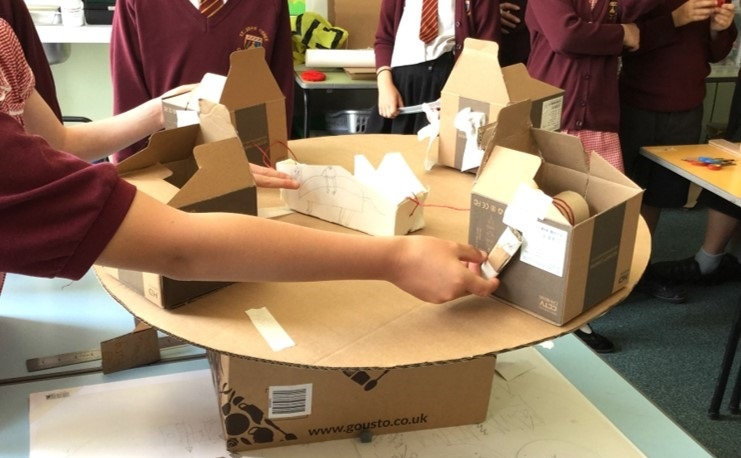
‘I’m seeing teaching from a different viewpoint and supporting (colleagues) in being more creative in their teaching and approaching teaching in different ways apart from just standing at the front using the screen.’
(Teacher)
You’ll be familiar with the idea of a ‘Teach-Meet’, where teachers meet to share their teaching tips and innovations. ‘Teach-Make’ adapts this, keeping the idea of collaborative innovation but emphasising the importance this approach gives to active, 'making' practices, which are central in the arts.
It is an approach rooted in and developed from a special collaboration between artists and engineers in Coventry for the 2012 Cultural Olympiad. These partners believed their collaborative process had important potential for educating children and young people in the city, both because it fosters creative, critical and collaborative habits, and because it draws on the ways of working that underpinned the real-world working lives of art-makers and engineers.
The resulting educational intervention, The Imagineerium, developed primary-aged children’s learning in STEM and arts subject areas, as well as other subject areas (English, History, Geography). But what excited teachers was the increased confidence in students’ ability to learn, the sense of freedom and ownership of their own learning and the positive learning behaviours that the project fostered (Trowsdale, 2020).
Senior leaders in schools were keen to know how their teachers could develop this approach. Over the last five years, through ‘Teach-Make’, we have been working with artists and teachers using the Trowsdale Art-making Model for Education (TAME) to help teachers design schemes of work in new ways (Trowsdale and Davies, 2024). ‘Teach-Make’ involves developing those teachers’ confidence in leading learning in more arts-rich ways.
<--- The article continues for users subscribed and signed in. ---> Enjoy unlimited digital access to Teaching Times.